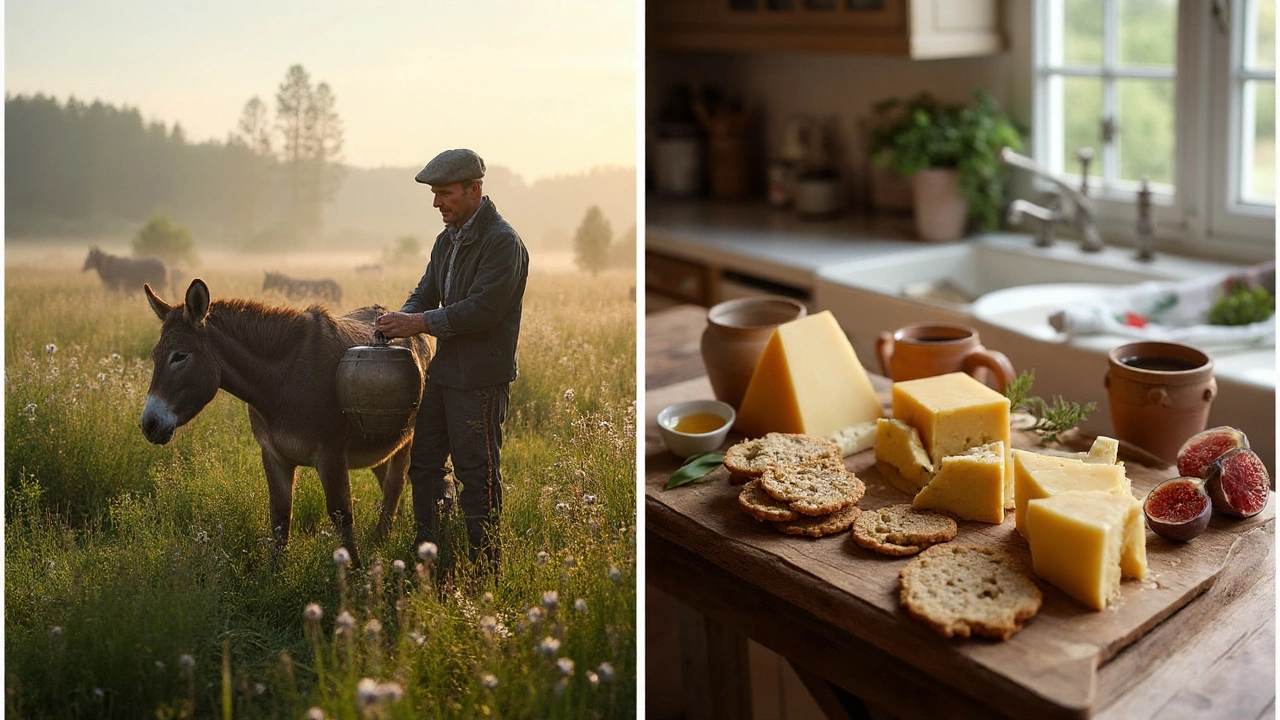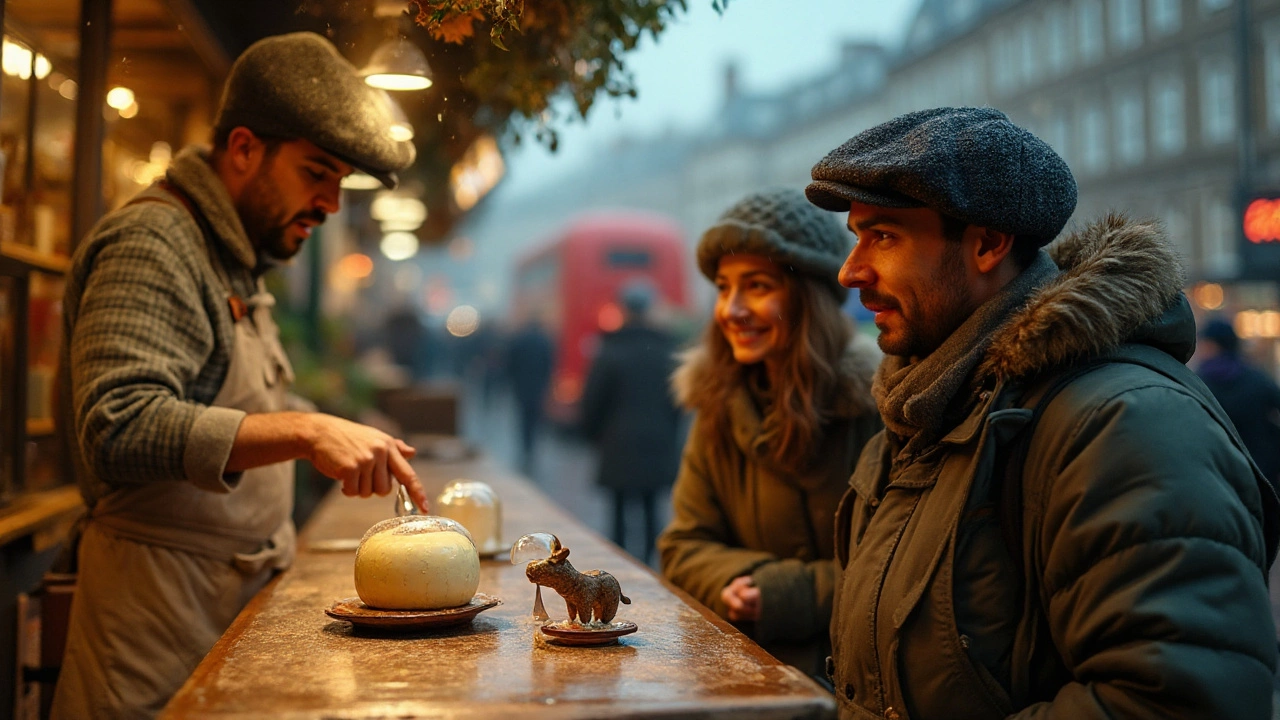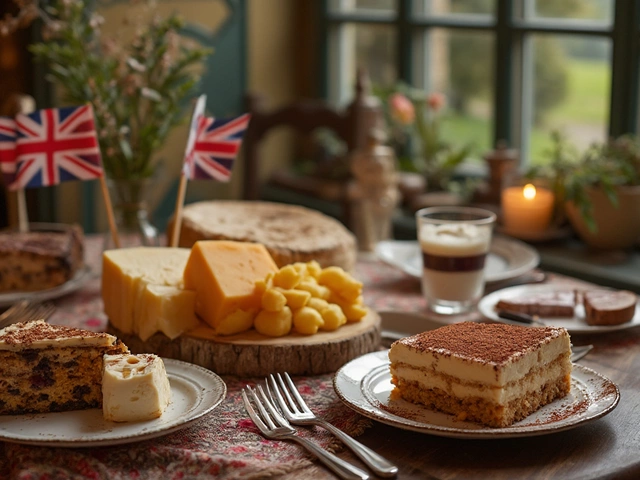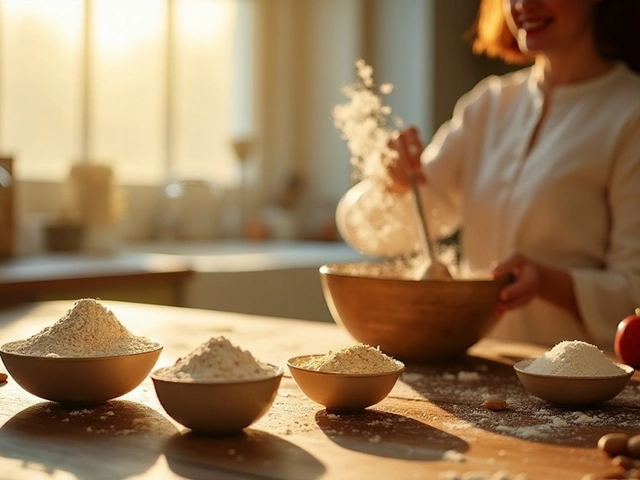Sticker shock first: a rare Serbian cheese can cost more than a weekend flight. If you clicked to find out which one and how on earth it got that pricey, you’re in the right place. I’ll give you the straight answer, why it costs so much, how it compares to other big-ticket cheeses, and what to do if you want to try it-or something similar-without chasing unicorns.
- TL;DR: The most expensive cheese by normal retail price is Serbia’s Pule, a donkey‑milk cheese that often runs about €1,000-€1,500 per kg (roughly US$450-$700 per lb) when it’s actually available.
- Why so pricey: vanishingly small milk yield, hand‑milking, a protected herd, and tiny yearly output-often just tens of kilos.
- Record sale: A DO Cabrales blue from Spain fetched around €30,000 for a single wheel at a 2023 charity auction-an auction record, not an everyday shelf price (reported by Guinness World Records and Spanish press).
- Other contenders: Swedish moose cheese, long‑aged Bitto Storico, and gold‑flecked White Stilton can also be very expensive, but usually below Pule on retail price per kg.
- Can you buy Pule? Almost never outside Serbia. Consider close‑enough alternatives and smart tasting tips below.
What the world’s priciest cheese actually is (and what it costs)
By standard retail pricing-not special auctions-the most expensive cheese in the world is usually Pule, made from Balkan donkey milk in Serbia’s Zasavica Special Nature Reserve. It’s a small, conservation‑focused operation. The herd is hand‑milked, output is tiny, and production happens in short runs. That queue of challenges is why you’ll see eye‑watering numbers attached to it.
Typical price windows reported by producers and international coverage cluster around €1,000-€1,500 per kilogram. In North American terms, that’s roughly US$450-$700 per pound, depending on currency and the year. Two big caveats. One: Pule can be impossible to find outside Serbia; most years, very little hits the open market. Two: prices swing with availability, demand, and the farm’s conservation priorities.
So why do headlines sometimes cite even higher figures? Two reasons. First, early press stories and resellers occasionally quoted peak or old prices. Second, people mix “most expensive per kg at retail” with “most expensive single sale at auction.” They’re not the same. For auctions, Spain’s Cabrales blue has grabbed recent headlines: a winning wheel sold for about €30,000 in 2023 at the annual contest in Arenas de Cabrales-widely reported by Guinness World Records and Spanish outlets. But day‑to‑day, Cabrales in shops costs a fraction of that. Pule still leads on typical retail price per kilogram.
Quick taste snapshot. Pule is pale and crumbly with a clean, delicate aroma and a tang that’s more refined than punchy. Donkey’s milk is naturally low in fat and has a different protein profile than cow’s milk, so the texture and flavor land differently from, say, a buttery cow’s‑milk triple‑crème or a salty, savory Pecorino.
Why Pule is so expensive: the real cost drivers (and a simple breakdown)
If you want to sanity‑check any luxury food price, follow the supply chain. For Pule, the inputs are extreme, the process is slow, and the output is tiny.
Core reasons it’s expensive:
- Ultra‑low milk yield: Balkan donkeys produce a small fraction of the milk a dairy cow does. Getting enough milk for a single kilogram of cheese takes a lot of animals and time. Producers at Zasavica have said it takes many liters of milk-collected painstakingly-to make just one kilo.
- Hand‑milking and labor: You can’t shift this to industrial automation. It’s highly manual, which pushes labor costs up.
- Minuscule yearly output: Think in tens of kilograms, not tons. With supply that small, one chef’s order can wipe out availability.
- Conservation and animal welfare: The herd is protected; production choices prioritize the animals and the reserve over volume.
- Losses and rejects: Small‑batch cheesemaking has a higher per‑unit cost when a batch doesn’t behave or meet release standards.
A simple look at the process highlights where the cost piles up.
- Milking: Donkeys are milked by hand in small amounts per session. That limits daily volumes.
- Curdling: The milk is set with rennet. In tiny vats, any yield loss hurts the final price.
- Cutting and draining: Gentle handling keeps texture delicate; again, more labor per kilo than industrial cheese.
- Forming and salting: Carefully shaped and salted to control moisture and tang.
- Aging/finishing: Pule is finished in small batches; time and handling continue to add cost. Some batches are lightly smoked or aged a bit longer, depending on the year.
- Quality selection: Not every wheel makes the cut. In small runs, discards make the survivors pricier.
For context from reliable sources: Zasavica Special Nature Reserve (the origin of Pule) has discussed the tiny milk yields and conservation slant; the reserve is often cited in Serbian and international reporting. For auction records, Guinness World Records documented the headline‑grabbing Cabrales sale. For other high‑price cheeses, primary references include Älgens Hus in Sweden (the moose‑cheese farm), the Slow Food Presidia for Bitto Storico, and the DO regulatory council for Cabrales.
If you’re scanning a cheese list and want to know instantly whether a sky‑high price is justified, use this quick heuristic:
- Is the milk from a rare animal or breed (donkey, moose, heritage cow/goat)? Expect 3-10x a standard price baseline.
- Is production manual and small‑scale (hand‑milking, micro‑aging caves)? Add another 1.5-3x.
- Is aging extreme (5-10 years) or risky? Tacks on 1.5-2x, sometimes more.
- Is the price based on an award or charity auction? That’s a one‑off number-don’t use it for everyday comparisons.

How Pule stacks up against other ultra‑expensive cheeses (with real‑world prices)
Here’s a snapshot that separates retail reality from auction drama. Prices are typical ranges compiled from producers, trade reporting, and specialty shops; they can move with currency, season, and micro‑supply.
| Cheese | Origin | Milk | Typical retail price (per kg) | Approx. per lb | Availability notes | Primary source/cred |
|---|---|---|---|---|---|---|
| Pule | Zasavica, Serbia | Donkey | €1,000-€1,500 | US$450-$700 | Extremely limited; often not exported | Zasavica Special Nature Reserve statements; international coverage |
| Moose cheese (Älgens Hus) | Bjurholm, Sweden | Moose | ~€1,000-€1,300 | US$450-$600 | Sold seasonally, on‑site; tiny output | Älgens Hus (The Moose House) producer info |
| Bitto Storico (long‑aged) | Lombardy, Italy | Cow + goat (heritage breeds) | €200-€400 (10+ years can be higher) | US$90-$180 | Available via select affineurs; aging up to 10+ years | Slow Food Presidia; local consortia |
| White Stilton Gold | England | Cow | £500-£700 | US$290-$400 | Seasonal novelty with gold flakes | Long Clawson Dairy releases |
| Cabrales (retail) | Asturias, Spain | Cow (often mixed with goat/sheep) | €30-€60 | US$14-$28 | Widely available in Spain; exported | DO Cabrales council |
| Cabrales (record auction) | Asturias, Spain | Cow/mixed | ~€13,000+/kg (single wheel) | US$6,000+/lb | One‑off charity auction in 2023 | Guinness World Records; Spanish press |
What this means if you’re planning a splurge:
- For the rarest retail buy, it’s Pule or Swedish moose cheese. Expect strict limits and long waits.
- For complexity per dollar, long‑aged Bitto Storico delivers a fascinating, evolving profile without jumping into four digits per kilo.
- For showmanship, White Stilton Gold brings the sparkle, though the gold flakes are more spectacle than flavor.
- For blue lovers, top‑scoring Cabrales wheels can be sublime without auction‑level drama-if you buy them like a local and eat them fresh.
Can you actually taste Pule or moose cheese? If you’re not traveling, probably not. Pule is often retained locally or promised to select chefs. Moose cheese is typically sold on‑site at Älgens Hus, in small quantities during milking season. If you’re serious, call ahead before you book travel, and be ready for “sorry, not this season.”
How to try it (or get close): buying tips, pairing moves, and a quick cheat sheet
If the exact cheese is out of reach, aim for the experience: rare milk profiles, careful aging, and a clean, focused tasting setup. Here’s how to get the most out of a precious wedge-Pule or otherwise.
Buying checklist (works for any luxury cheese):
- Ask the affineur: When was it made, and when was it cut? Peak flavor drifts with time and moisture loss.
- Request a nose and a sliver: Even rare cheeses should smell clean, lactic, and balanced-never sharp ammonia or barnyard funk that overwhelms.
- Check the cut face: It should look moist but not weeping, clean‑textured, and free of odd discoloration.
- Buy less, more often: 50-100 g is plenty for a focused tasting. Freshness beats a large hunk sitting for weeks.
- Transport smart: Insulated bag, ice pack, and keep it out of a hot car. Temperature swings ruin texture fast.
Serving cheat sheet (to taste like a pro):
- Temperature: Serve at cool room temp (about 18-20°C / 64-68°F). Too cold flattens aroma; too warm gets greasy.
- Neutral base: Plain crackers or baguette; skip garlic, herbs, or anything that bullies the cheese.
- Gentle sweets: A drizzle of acacia honey, a slice of ripe pear, or a few figs-supporting cast, not headliners.
- Wine pairing: Crisp sparkling (brut), mineral white (Chablis, Albariño), or a light, earthy red if the cheese is more robust. Keep oak and high alcohol in check.
- Small bites: Thin, coin‑size pieces. For rare cheeses, your palate notices more when portions are small.
Flavor‑driven alternatives (if you can’t source Pule):
- For a clean, delicate tang: Try a young, high‑quality goat’s‑milk tomme or a mild sheep’s‑milk cheese. You’ll get a bright, lactic profile without barnyard heaviness.
- For rare‑breed intrigue: Look for heritage‑breed cow cheeses from small Alpine producers; the milk character can feel uniquely “alive.”
- For texture and elegance: A well‑made, lightly aged Manchego or a young Pecorino Sardo can scratch the itch.
- For the “I want a story” factor: Long‑aged Bitto Storico releases tell a vintage‑style tale, evolving into deep caramel, broth, and alpine herb notes.
Storage pitfalls to avoid (these kill expensive cheese fast):
- Plastic suffocation: Rewrap in breathable cheese paper or parchment plus a loose plastic overwrap to prevent drying.
- Freezer shock: Don’t freeze; it wrecks texture.
- Fridge funk: Keep away from onions, garlic, and strong leftovers. Cheese absorbs odors like a sponge.
- Week‑old rinds: Trim the exposed edge before serving to refresh the aroma.
Step‑by‑step tasting routine (10 minutes, zero fluff):
- Set the cheese out 40-60 minutes before serving.
- Pour water, set neutral crackers, and slice one pear.
- Cut small, even pieces with a clean knife; wipe between cuts.
- Smell first, then taste plain. Take a second bite with a tiny drop of honey or pear.
- Try a sip of your wine or tea. Notice how acid and bubbles change the texture.
- Take notes on aroma words you’d actually use at home (yogurt, hay, cream, almond), not wine‑critic poetry.
Pro tip: If a shop lets you sample, always taste blind against a less expensive cheese of similar style. If the pricier one doesn’t clearly win on balance, aroma length, and texture, save your money.
Mini‑FAQ
Is Pule really the priciest cheese?
Yes-by regular retail price per kilogram, Pule leads. Auction one‑offs (like a record Cabrales wheel) aren’t the same as shelf prices.
Can I buy Pule online?
Unlikely. Production is tiny, and exports are rare. Most seasons, it’s reserved locally or for select chefs. Be skeptical of online listings that don’t name the producer, batch, and year.
Does donkey milk mean less lactose?
Donkey milk still contains lactose. Some people find it easier to digest because of different proteins and low fat, but if you’re lactose‑intolerant, treat it with caution and know your limits.
Is moose cheese real, or just a headline?
Real. A small Swedish farm, Älgens Hus in Bjurholm, makes it seasonally from a few moose. Output is very small, and pricing reflects that.
Why did that Cabrales wheel cost so much?
Awards plus a charity auction. It was a single, best‑in‑show wheel with lots of publicity and bidding pride. Normal Cabrales at the counter is affordable by comparison.
How do I know I’m not overpaying?
Ask for batch info, taste a sliver, compare it blind against a cheaper style‑match, and buy the smallest piece first. If the flavor doesn’t linger and evolve, skip it.
Next steps: If you’re traveling to Serbia or northern Sweden, contact producers well ahead-availability changes by season. At home, build a “rare styles” tasting: pick one heritage‑breed cow’s cheese, one goat’s, one sheep’s, and a long‑aged Alpine. Use the same serving plan above. You’ll get 90% of the thrill without chasing a cheese that may not be for sale this year.




